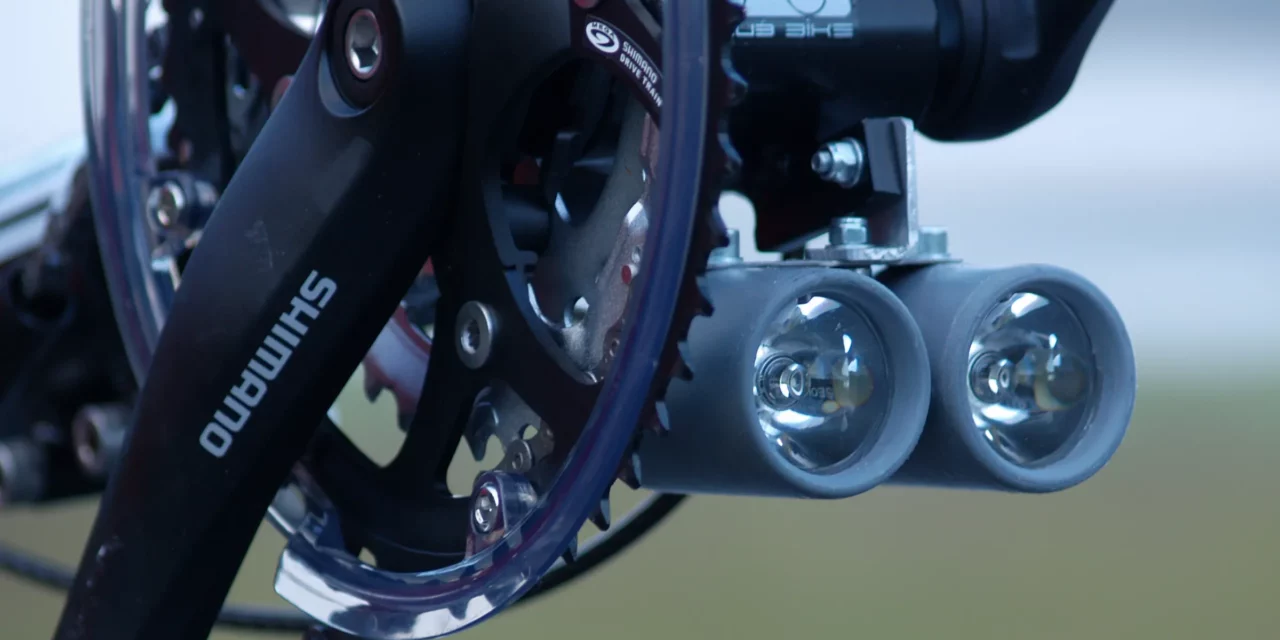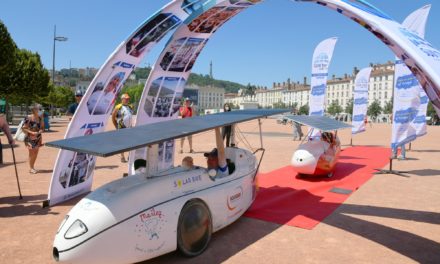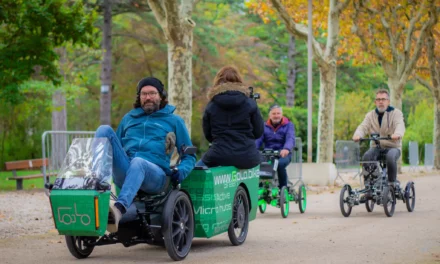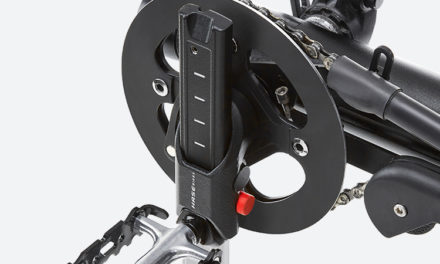If you live on the northern hemisphere, winter is coming, long nights have been present for a few weeks already, and even during the day, there may be situations when visibility is very poor. The sky can get cloudy, or you ride through a forest or against the low Sun. If you are one of those recumbent riders, who ride every day all year round, having good lights is crucial, but even if you ride only during the lovely sunny warm days, you may want to have good lights as well. Recumbents are generally lower; thus, a bit less visible and well-placed flashlight significantly improves your safety.
But not only for our visibility, we carry lights on our bikes. Of course, we also want to see the road in front of us. And if we go on multi-day tours, we also need a light in the tent or to see into the pot while cooking late. The light is, therefore, a crucial part of cycling equipment, which is why we will look at them today.
LEDs have taken over the lighting of homes, cars, and, of course, bicycles. You would only find ordinary light bulbs or some halogens on vintage bikes. LEDs are mainly small, economical, and do not mind flickering. And this is all a cyclist needs. However, all kinds of electronics, including lights, undergo constant rapid development, and what is written in the article today will no longer be true tomorrow. Therefore, we will focus on the basic options that the world of bicycle lights offers, and a few interesting topics and products will also be mentioned.
Even buying lights requires asking yourself one fundamental question. “How will I use the light?” We won’t differentiate between front and rear lights here, but there can be a big difference between driving primarily around town, on country roads, or off-road. If you will be riding in the dark often, but in a city under the street lamps, it is not necessary to get an ultra-powerful light. A high-quality flashlight will do the job. Flashlights are also helpful even when riding during the day. Flashing light catches drivers’ attention much sooner than a cyclist without any light somewhere far ahead, so many recommend using lights, preferably flashlights, during daylight riding. In the case of frequent night riding on roads, you should look for lights that are not only powerful but also have good optics, ensuring that you do not dazzle oncoming cars.
How bright is it?
But how do you actually know what a powerful light is, or how is the “power” of the light defined? From household or car light bulbs, we mostly know the power of light bulbs expressed in watts. Although this parameter is also used in cycling, you will see the designation in lumens much more often. The reason is simple. Old tungsten bulbs had a light efficiency of roughly 10-15 lm/W and halogens 15 to 25 lm/W, so it was a true custom saying: “The more watts, the more light.” Today, however, different LEDs can have different efficiencies, which generally range between 70 and 160 lm/W.
If you want a basic idea and comparison, a 60 W classic tungsten light bulb has about 770 to 820 lm, roughly corresponding to the 10 W input of an ordinary LED light bulb. However, you can get up to 1600 lumens from a ten-watt LED bulb. For lumens, however, additional information should be provided in the form of the angle from the light source under which the measurement was performed. In reality, no one in the cycling industry cares about it.
Cycling lights usually have a luminous flux ranging from 50 lumens for the weakest ones to around 2000 lumens for the powerful ones. If you want to ride on the roads at night, looking for lights with at least 800 lm would be advisable. For fun night gravel rides in the forest, the minimum should be around 1000 lm. It is also good to be aware that car high beams have approximately 1200 lm; therefore, if you use strong lights, you can dazzle oncoming cyclists, pedestrians, and other vehicles. You certainly want to avoid dazzling a semi-truck driver approaching from the opposite direction on a narrow road.
LUMEN
The lumen (symbol: lm) is the unit of luminous flux, a measure of the total quantity of visible light emitted by a source per unit of time, in the International System of Units (SI). If a light source emits one candela of luminous intensity uniformly across a solid angle of one steradian, the total luminous flux emitted into that angle is one lumen.
Source: Wikipedia
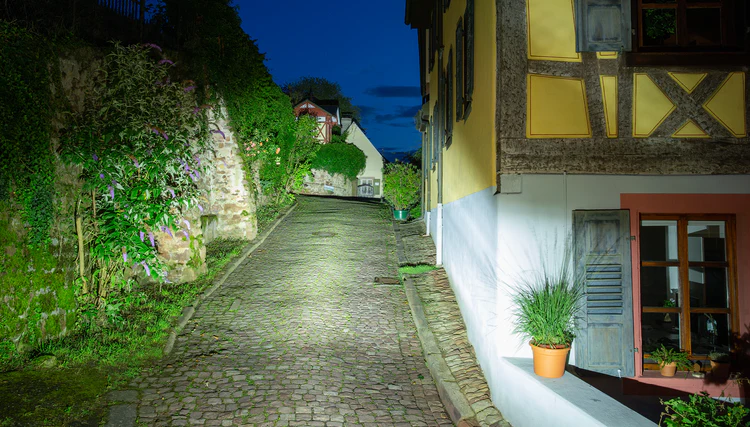
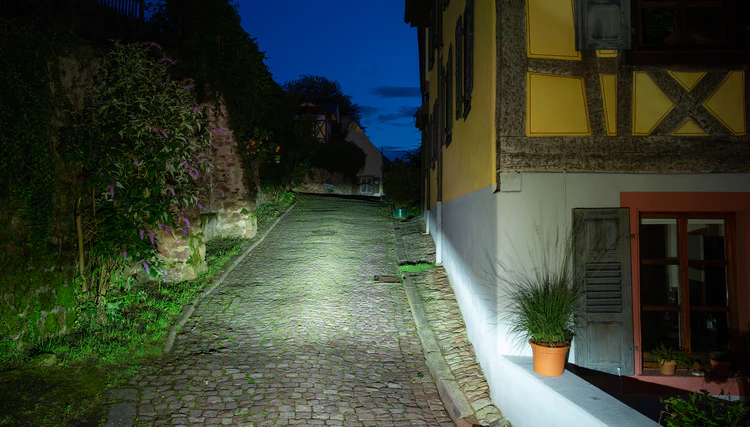
Optics are essential
And that brings us to the next issue, which is optics. A wide light cone is more useful when riding on a gravel road, as it gives you a general idea of what is in front of you. If on the road with some traffic or in the city, you will appreciate the narrower cone, illuminating the road ahead more. In addition, oncoming drivers and cyclists will appreciate if you also have the top part of the cone “cut off” so as not to dazzle them, just like with cars. And just as is the case in motoring, also in cycling, lights that have both low beam and high beam start to appear. BTW: Some velomobiles have a light on a joint with a remote control, so the rider can change from low to high beam mechanically.
If you want to be a considerate road user, I recommend focusing on lights that comply with German regulations, denoted by the abbreviation StVZO or Straßenverkehrs-Zulassungs-Ordnung. Translated into English: Regulations for Road Traffic. Among other things, they state that the lights must have a “cut” light cone from above and must be permanently lit. Flashing is, therefore, not permitted in Germany. One reason is possible driver distraction, but I’ve also heard of a reason that mentions the similarity to emergency lights. However, flashing is an element that significantly increases safety because the driver automatically knows that somewhere in front of him is a cyclist. Nothing else flashes red or white. That’s why it’s always a perfect combination to have a steady light that illuminates the road ahead and a flashing one to boost your visibility. At the same time, you have double the lighting, so the risk of running out of batteries decreases.
With and without batteries
And that brings us to another crucial point. What power source to choose for lighting. We have several options. Somewhat old-fashioned, but at the same time, the cheapest one is a power supply via AA, AAA, or some button cell. AA or AAA batteries can last relatively long with some small lights, especially if you use only the flashing mode. You can also use much more ecological and economical rechargeable batteries. When traveling for a long time, classic AA or AAA batteries have the advantage that you can buy them almost anywhere, and you can also carry them as spare ones so that you never run out of juice in the middle of the night.
The second option is charging via USB, which is now completely common. The batteries are either part of the light itself or placed externally. This applies especially to the mighty lights whose battery is usually massive, and manufacturers often allow you to choose from several capacities. However, if you want to go on a multi-day trip with such lights, you must consider that you will also need to carry one or two additional batteries. The third option is a dynamo. I won’t mention the old bottle dynamos, but the modern hub ones. Especially the very high-quality but relatively expensive ones that have so little friction that you basically don’t notice them. And that’s if you’re lighting up or even charging a power bank or another device. This is their most significant advantage. They are able to supply the necessary electricity to the high-powered lights whenever you get on the bike. An indisputable benefit, especially in the case of long-distance cycling or daily urban use of the bicycle.
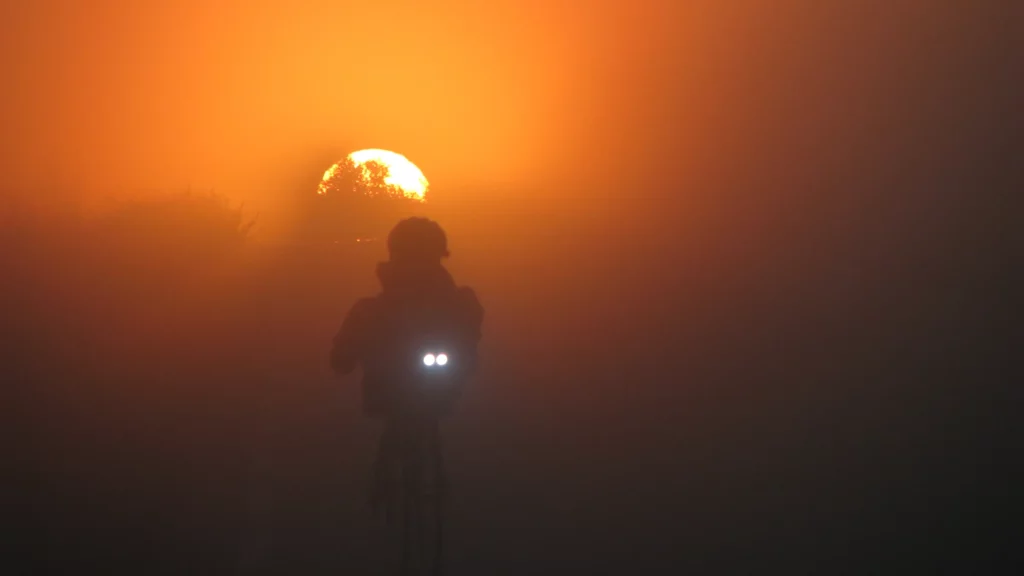
Nowadays, we also have to include another type of battery. In this case, the main battery of the electric bike. The vast majority are already capable of powering lights and possibly even charging external devices. The lights can be very powerful, and the modern ones often have not only a mode with standard lighting but also diodes intended for daytime lighting and sometimes even high-beam modes.
On the opposite side, there are lights powered by induction power that turn on whenever you step on the pedals. Magnets are placed in the wheel’s spokes, and when it rotates, there is contactless induction and electricity production, which immediately powers the light. There are even versions that require no magnets installed and instead use the rim. They have enough power to be seen and are mainly intended for urban use.
Shine backward too!
However, not only does the cyclist need to shine in front of him, he also needs to let those behind him know about his presence. There is an abundance of red and flashing lights on the market, and all you have to do is choose their power supply method, performance, and possibly some other functions. Rear lights can hide a radar that detects cars behind you, GPS tracking in case of bike theft, a projector that creates a moving bike lane, or a brake light function. Although it is the standard today for both front and rear lights, it is essential to have the transparent cover shaped so that the lighting can be seen from both sides. The reason is simple. The most significant number of cyclist accidents occur at intersections.
The higher, the better!
The critical factor for almost all recumbent riders is the height of the light because most of the bikes are relatively low. So I recommend using some additional helmet lights or lights mounted on the flag poles. There are even long LED sticks that you can use as a flag pole. They shine like hell and are ultra visible. Still, the higher you can get the light, the better.
Off the bike
Cyclists also need light outside the bike. Especially if you like cycle touring. You need the light in the tent while cooking or when fixing the bike in the darkness. In many cases, a mobile phone will do just fine, but when you need both hands free, it is better to have a real lamp available. Therefore, many cycle lights offer solutions for these cases as well. Either in the form of helmet adapters or they are somehow transformable into a headlamp.
In today’s world, which is full of all possible solutions, there are also lamps explicitly designed for tents or to be used on a table in a campsite, the batteries of which often serve as a power bank.
In the next part of the article, available for our Premium Members only, you will find a list of typical examples of the above-mentioned types of bike lights.
See the gallery, so you know what to expect from the next part.
PREMIUM CONTENT
If you want to read the full article, you have to be a Premium Member.
⭐️ Become a Premium Member! ⭐️
Are you Premium Member? Just Log-in!

